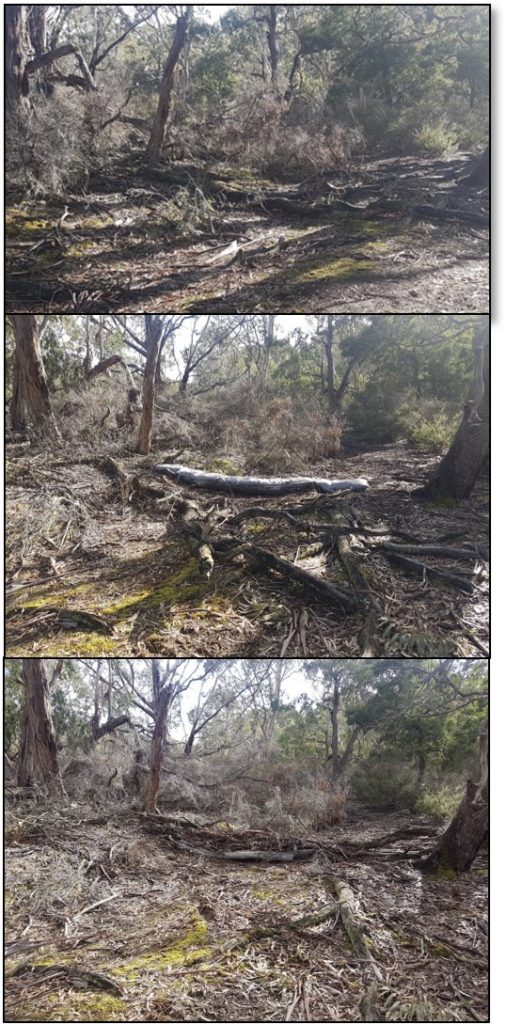Minor ‘surgery’ to restore another wetland on the Wannon River floodplain!
There are some days at work that stand out from others. They’re usually around this time of year, when the air is crisp, water droplets glisten on the trees and you are all alone in the bush. After emerging from Victoria’s circuit-breaker lockdown a couple of weeks ago, I desperately needed some time in the bush and a chance to soak up some much needed sunshine.
There is a wetland just northwest of Brady Swamp that I discovered a while ago had a small, artificial drain running out of it. Although it is in the National Park, the drain probably reflects an historical legacy of when this area was used to run cattle. There are numerous small dams, old fence lines and even the odd car body scattered amongst the scrub around this area. This drain is only quite small but it is a small cut that keeps bleeding. Over time some of these drains will probably heal up as soil washes in and builds up behind the fallen timber and leaf litter, but it makes sense to accelerate the healing process and give nature a helping hand. I’ve been waiting for a couple of years to get in here and do some repair work which has now been possible thanks to the support of Parks Victoria.

The modest size of the drain made it viable to bring in some pre-filled sandbags, although this was dependent on being able to get a vehicle close enough. This area gets pretty wet so time was of the essence and I only just managed to squeeze the visit in between the lockdown and an impending weather system. But I’m happy to report that the ‘surgery’ is now complete.
In this part of the world I was mindful of the deer population and the potential for them to trample the sandbags. I’ve had situations at other sites where curious cows have actually moved them, probably thinking they were full of feed. Sandbag weirs can also become part of game trails and we can see concentrated animal movement across the top of the structures. So to avoid this issue something that came to mind was to cover the structure with branches and logs that were lying in the drain. I was actually pretty happy with the end result. Perhaps I was a beaver in a past life?

Aside from the small repairs done in the artificial drain, I am particularly excited about seeing the upstream wetland hold some water. Based on what we can see from aerial imagery and the fact that it is still an open area (terrestrial vegetation has not crept in), it does still get quite wet. The big benefit however will be keeping the water on it for longer, to restore its natural hydrology. In the meantime, the picture below is our new starting photo-point.

This project is part of the Grampians/Glenelg landscape wetland restoration program, funded by the Victorian Government’s Biodiversity Response Planning program.
